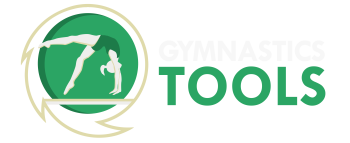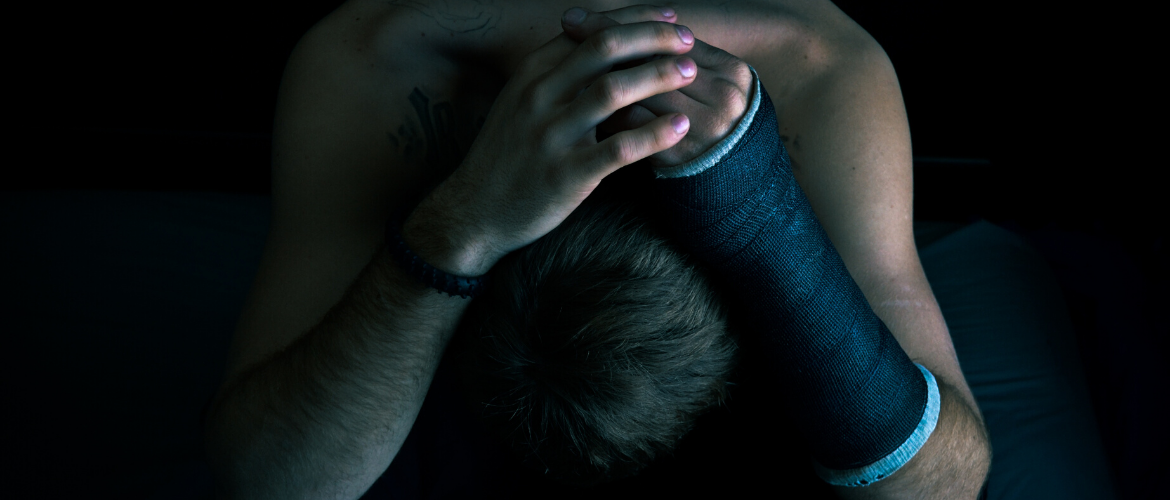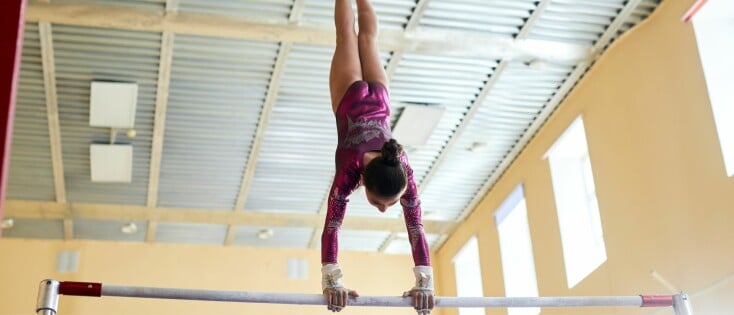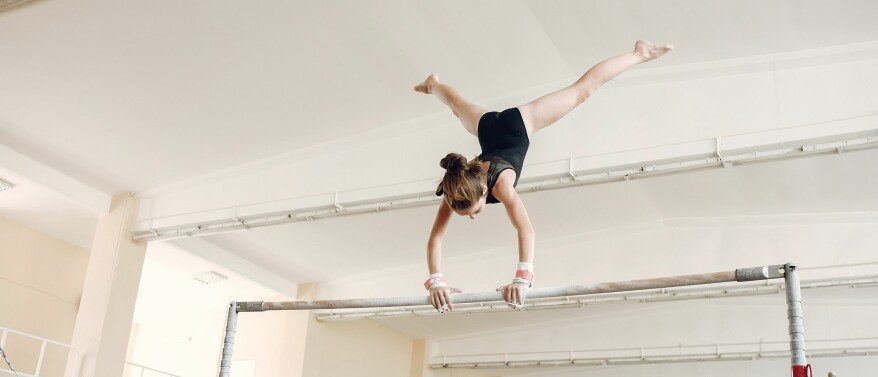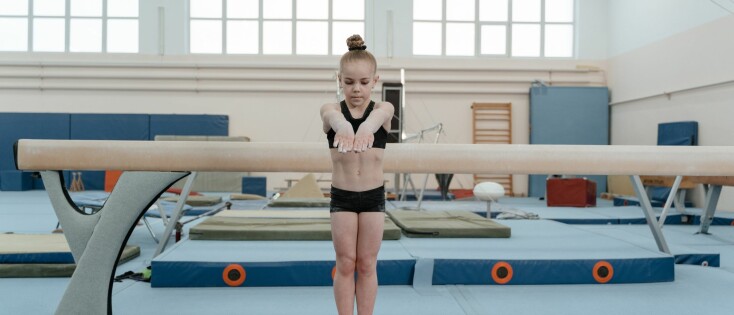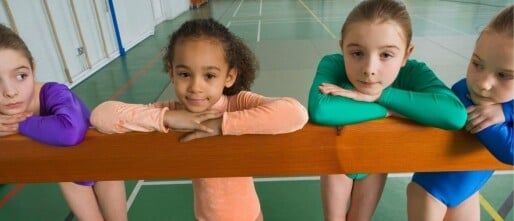Injuries are common in gymastics. In literature, research on gymnastics injuries has been aimed mostly at the higher levels.
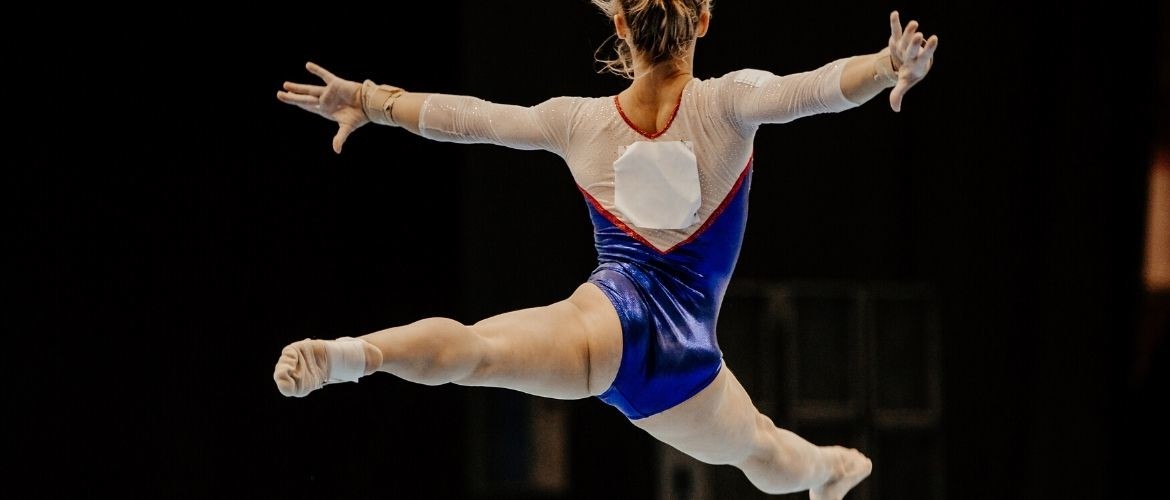
According to research, the five most common injuries are ankle and foot, knee, elbow and forearm and wrist and hand injuries. Other research shows that back injuries are also common. Most are caused by contact moments like a landing and happen during competitions since most gymnasts will go beyond their limits during those. Other possible reasons why gymnasts suffer injuries during competitions are that they tend to continue doing gymnastics when they already have injuries or that they experience competition stress which can lead to more mistakes. This can ultimately lead to more acute ones.
More studies point out that men have more injuries to the upper extremity in general while women have more on the lower extremity. This can be explained by the types of apparatus that are used in men’s and women’s gymnastics. Men use rings, parallel bars and horizontal high bar in which the arms have to do quite a lot of work. Women use their arms mostly on bars. On beam, vault and floor, the legs receive the most impact which can explain why most injuries appear there. In all landings, with amongst others acrobatic lines, the legs and feet receive the most impact.
The apparatus floor is associated with the biggest number of injuries in men’s as well as women’s gymnastics.
Ankle and foot
Ankle and foot injuries are the most common by far. Usually, they are acute after a landing or fall. The lateral ankle ligaments are hurt most of the time. These tear or overstretch after a movement in which the ankle turns in (or out) too much. This can happen in, for example, a landing. The Achilles tendon is often hurt as well. It can get irritated or even tear because of overburdening.
Knee
Knee injuries often have to do with internal damages of the knee structures like the ligaments, tendons, meniscus or cartilage which damage or tear. This also often happens in contact moments like a landing.
Back
Back injuries are usually caused by overburdening. Often, gymnasts are hypermobile and frequently execute extreme ranges in movement like a back walkover. The height of the impact is then concentrated around certain back segments, muscles and ligaments which often causes nagging pain, mostly in the lower back.
Elbow
In younger gymnasts, OCD (osteochondritis dissecans) is a common elbow injury. The cartilage and bone are irritated because of repetitive impact. In gymnastics, the elbow often has to carry the complete bodyweight, or more, in a stretched position. This can lead to irritation of the cartilage and bone.
Instability of the elbow is common in sports like gymnastics. Insufficient support of the joint by caps, tendons and ligaments, can cause (sub) luxates.
Wrist
The most common wrist complaint is pain to the upper part of the wrist, mostly in support moments. You can imagine that the wrist joint needs to endure considerable force in extreme positions, especially in supporting a back handspring for example. In this skill, twice your bodyweight can come down on your wrists.
Research
In conclusion, most research is aimed at elite gymnasts. Which are most common depends on the age and level of training. In general, gymnastics is a sport in which many injuries occur so prevention of injuries is important. To decrease the chance of an injury, every basic bio-motor ability should be part of a training to optimally prepare the body for the impact it receives in gymnastics. The basic bio-motor abilities are coordination, flexibility, endurance, strength and speed. Use specific moments in your practise to work on them in for example a strength, endurance or flexibility corner.
